Torulosa Wattle, Deep-gold wattle
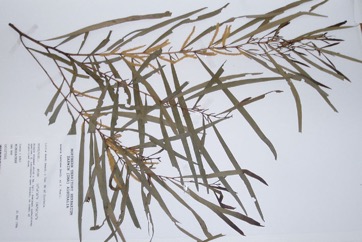
A native plant of northern Australia. It prefers light well drained deep soils. Often this is on sandstone soils on slopes or near creeks. It grows best in open sunny positions. It may be damaged by drought and frost. It needs extra watering to maintain a good leaf cover. It cannot tolerate wet and poorly drained soils.
Also known as:
Thancoupie
Edible Portion
- Gum, Seeds, Pods
Where does Torulosa Wattle grow?
Found in: Australia
Notes: There are about 1,350 Acacia species. Over 1,000 occur in Australia. Also as Mimosaceae.
Growing Torulosa Wattle, Deep-gold wattle
Cultivation: It is grown from seed. The seed need treatment to break the hard seed coat. Normally this is by putting the seeds in very hot water and letting the water cool down overnight then planting the seeds immediately. Seed is produced in large amounts and seeds germinate quickly after treatment. Flowering is May to July and seed are available August to October. Plants do not transplant easily.
Edible Uses: The gum is eaten. The seeds when black and mature are crushed into flour and made into flat cakes for cooking. The young green fruit and seeds may be eaten raw.
Production: It is very fast growing. The tree lives for 10-12 years.
Nutrition Info
per 100g edible portion| Edible Part | Energy (kcal) | Protein (g) | Iron (mg) | Vitamin A (ug) | Vitamin c (mg) | Zinc (mg) | % Water |
|---|---|---|---|---|---|---|---|
| Seeds | 356 | 16.7 | - | - | - | - | 7.3 |
| Gum | - | - | - | - | - | - | |
| Pods | - | - | - | - | - | - |
Torulosa Wattle, Deep-gold wattle Photos

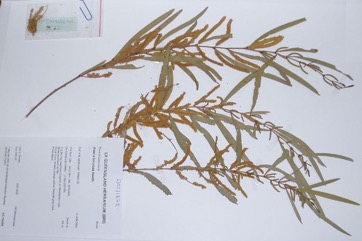
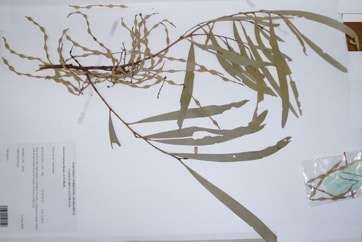
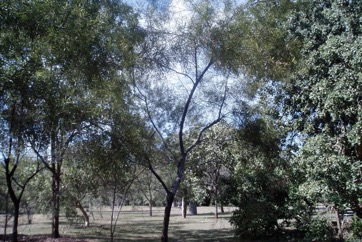
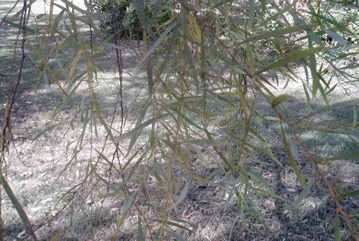
References
Bodkin, F., 1991, Encyclopedia Botanica. Cornstalk publishing, p 35
Brock, J., 1993, Native Plants of Northern Australia, Reed. p 76
Cherikoff V. & Isaacs, J., The Bush Food Handbook. How to gather, grow, process and cook Australian Wild Foods. Ti Tree Press, Australia p 198
Doran, J.C., & Turnbull, J.W. (Eds), 1997, Australian Trees and Shrubs: species for land rehabilitation and farm plantings in the tropics. ACIAR Monograph No 24. p 229
Dunlop, C.R., Leach, G.J. & Cowie, I.D., 1995, Flora of the Darwin Region. Vol 2. Northern Territory Botanical Bulletin No 20. p 20
Elliot, W.R., & Jones, D.L., 1982, Encyclopedia of Australian Plants suitable for cultivation. Vol 2. Lothian. p 122
Hearne, D.A., & Rance, S.J., 1975, Trees for Darwin and Northern Australia. AGPS, Canberra p 11
J. Proc. Linn. Soc., Bot. 3:139. 1859
Lazarides, M. & Hince, B., 1993, Handbook of Economic Plants of Australia, CSIRO. p 7
Levitt, D., 1981, Plants and people. Aboriginal uses of plants on Groote Eylandt. Australian Institute of Aboriginal Studies, Canberra. p 103
Milson. J., 2000, Trees and Shrubs of north-west Queensland. DPI p 154
Townsend, K., 1994, Across the Top. Gardening with Australian Plants in the tropics. Society for Growing Australian Plants, Townsville Branch Inc. p 66
Wightman, Glenn et al. 1992. Mudburra Ethnobotany: Aboriginal Plant Use from Kulumindini (Elliott) Northern Australia. Northern Territory Botanical Bulletin No 14. Parks and Wildlife Commission of the Northern Territory. p 8
Yunupinu Banjgul, Laklak Yunupinu-Marika, et al. 1995, Rirratjinu Ethnobotany: Aboriginal Plant Use from Yirrkala, Arnhem Land, Australia. Northern Territory Botanical Bulletin No 21. Parks and Wildlife Commission of the Northern Territory. p 14